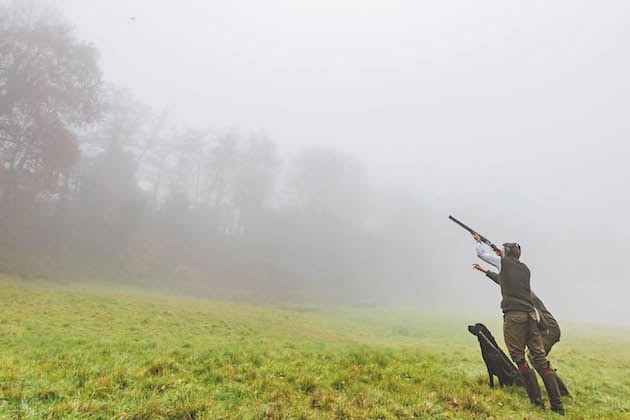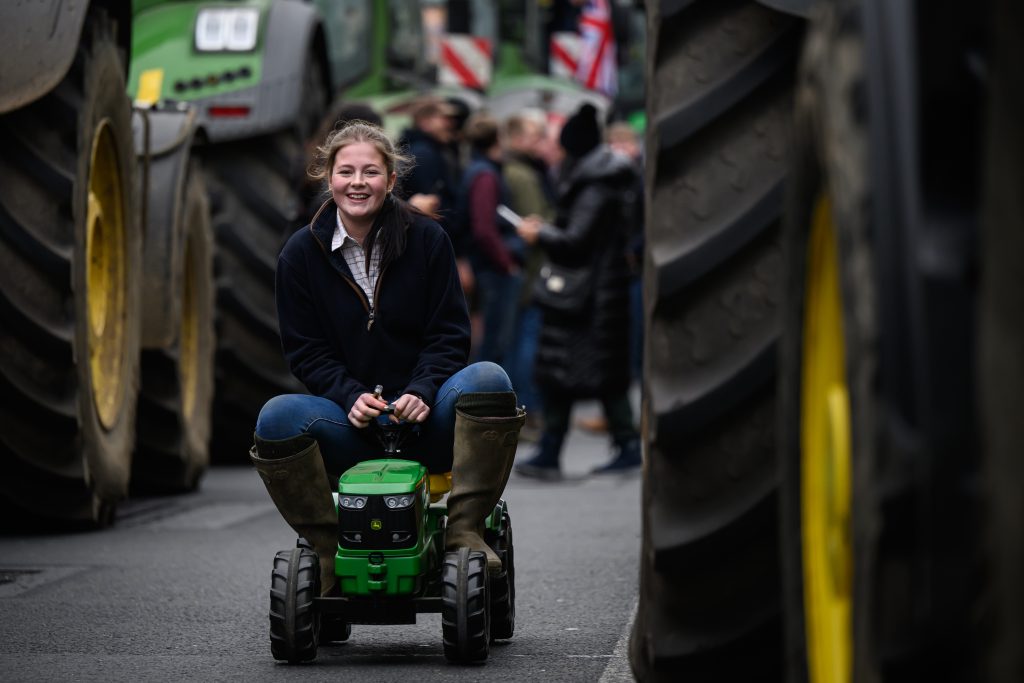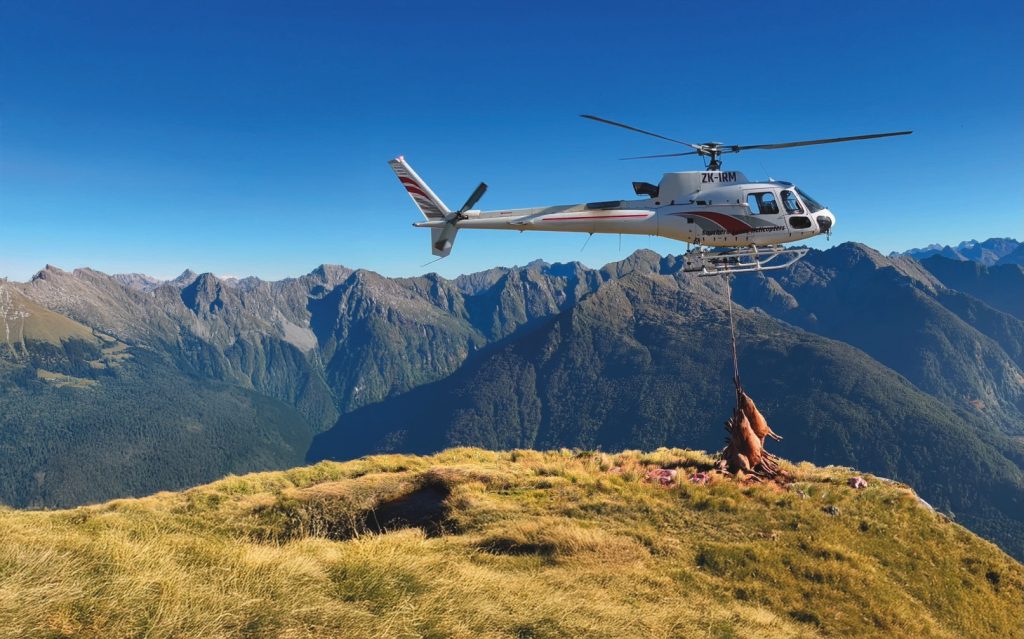Win CENS ProFlex DX5 earplugs worth £1,149 – enter here
What is the perfect weather for a shoot day?
 Tim Maddams lining up a shot
Tim Maddams lining up a shot
Imagine your perfect driven shooting day — a cheerful host, good hospitality, abundant birds passing over or across your peg, perhaps a faithful hound sitting meekly at heel, attentive to your every command, and, of course, you dropping the birds with a skill that makes your companions gasp.
Weather, 25 May
Perfect weather for a shoot day
But what about the weather? The classic shooting day would be cool, overcast and breezy. But why are these the most sought-after shooting conditions? Are they really what makes the birds perform best or are they simply what we have all been taught to want? (Read best shooting thermals for keeping warm.)
Gamekeeper Steven Fairclough is very much of that persuasion. He described his perfect weather for a shoot day as: “Rain the day before and through the night until about nine o’clock the next morning, then overcast with about 15 to 20mph winds.” He added: “If the weather is a little bit inclement, the keeper will always be happy. Bad weather keeps the birds in.”
Let’s take them one by one. First of all, how vital is wind? Breezy days are something of which I have some personal experience as I live in a steep-sided valley in the south-west of Scotland. The Atlantic lows tumble across the sea, are gathered by the Firth of Clyde and come howling up the valley. Beating on a shoot day before Christmas, the wind was so strong that when we put birds up into it, they simply hung there flapping their wings with all their might, making no progress.
Many believe cold weather is a key ingredient for a good shoot day, as it helps to fill up the drives
But, extremes aside, a bit of wind does seem to be an essential component of the best shooting days. It serves a number of vital functions. Flying into a good strong breeze lifts birds, bringing them over Guns at a good height, and a tail wind adds speed and excitement.
Its value is very much dependent on topography, however. If you are shooting on pancake-flat ground in Cambridgeshire, at least a stiff breeze is probably essential, but if you can fling them off Northumbrian crag tops, you can probably get away with a zephyr.
Wind does more than speed birds along. Wind is invaluable to dogs trying to find birds. Wind-blown scent is very helpful for dogs to home in on birds in tight cover.
Soggy conditions can put a dampener on a shoot day, making life harder for Guns and beaters alike
Scent
The same applies with picking shot birds. Once, I watched a Gun trying to pick a bird. Time after time, he sent his dog downwind to try to find it. When it became clear it wasn’t working, a beater walked to the other end of the field, where the breeze brought the bird’s scent towards the dog. It was promptly picked.
Wind also creates a vital audio camouflage, disguising the rattle and clatter of Guns, pickers-up and beaters getting into position. Birds will often seem jumpy on windless days. I suspect that they can hear what is coming much more easily and, if I were in their shoes, I’d jump too.
So what about the clouds? How essential is an overcast day? Some say that a clear, blue sky is perfect weather for a shoot day and it has real appeal. It is also true that dry pheasants fly better than wet ones. Anyone who has spent a soggy day in soggy vegetation trying to get soggy pheasants to fly will tell you they really don’t fancy it.
Then there is the issue of visibility. Many Guns argue that a cloudy sky gives a better contrasting backdrop to a bird. I find it hard to see why a dark-coloured pheasant would contrast better with a grey sky than a blue one, but living on Scotland’s west coast gives me few opportunities to test this theory. (Read a guide to shooting in bad weather.)
Every cloud...
The reason for Guns shooting better on cloudy days could be that a cloudy sky has multiple reference points that allow the brain and eye to calculate the speed and trajectory of a bird much more easily than they could against a plain, blue background. One thing we can all agree on is that shooting straight into the sun is an unpleasant and fruitless experience. Nothing ruins a good peg like constant bright, white light in your eyes.
The most contentious element of a good shooting day is cold. Many people will tell you cold is a necessity. The theory goes that cold weather brings wandering pheasants home and fills up the drives.
Low temperatures reduce the number of invertebrates available for free-roaming pheasants to feast on, while simultaneously increasing the birds’ need for calories to keep warm. Compared with most mammals, birds need a lot of calories, so a hopper full of wheat provides temptation that is hard to resist.
Snow is generally held to be the best thing for bringing birds home. With everything else buried under a thick layer of the white stuff, they have little choice but to head back to their hoppers. However, it is fair to say that there is debate on this point, with some gamekeepers maintaining that their birds hold equally as well in warmer weather.
What is beyond debate, though, is that cold weather is a beater’s delight. Not only does it make the work of finding birds much less sweaty, it prevents dogs from getting too hot and it flattens the impenetrable bracken thickets. It also makes the whole day more pleasant. Frozen ground doesn’t cover you in mud, your 4x4 doesn’t sink in frost and there is something hugely invigorating about sharp cold. (Read how to look after your dog after a shoot day.)
One curious notion that perhaps should be laid to rest is that air pressure is important to how well gamebirds fly. Air pressure is vital in shaping other weather conditions, but it is not the air pressure itself that counts. I recently read an article that asserted: “When there is low pressure, a bird such as a partridge, with a poor ability to glide, will find it easier to gain altitude because of the lack of downward [air] pressure. Conversely, on a warm, sunny day (higher pressure) on a shoot without natural topography to aid flight, a bird will struggle to gain as much height as on other days during the season in more favourable conditions.”
Under pressure
Explaining quite why this is 100%, absolute, complete and utter tosh would take a long time and some colouring pens, but in summary higher air pressure means more lift, not less. While I suspect the effect on gamebirds is negligible, it is noticeable on aircraft and, in low pressure conditions, planes require longer runways to take off because of it.
You can read up on it or watch YouTube videos about it if you want. Or, instead, next time someone starts lecturing you on Bernoulli’s principle and the flight of gamebirds, you could simply look thoughtful and say: “But is the flow of air over a gamebird wing actually isentropic when it is in flapping flight?” This will help to outsmart the smarty pants, or at least outbore the bore.
Weather matters - so what is perfect weather for a shoot day? A fine, cold day is a joy; cloudy skies make birds easier to hit, wind lifts them, snow brings them home. But, to be honest, a good keeper, a skilled host, well-drilled beaters and pickers-up, and good Shots will always count for at least as much, if not more.
The difference is that there is something you can do about them, but there’s not much you can do about the weather.
Related Articles
Get the latest news delivered direct to your door
Subscribe to Shooting Times & Country
Discover the ultimate companion for field sports enthusiasts with Shooting Times & Country Magazine, the UK’s leading weekly publication that has been at the forefront of shooting culture since 1882. Subscribers gain access to expert tips, comprehensive gear reviews, seasonal advice and a vibrant community of like-minded shooters.
Save on shop price when you subscribe with weekly issues featuring in-depth articles on gundog training, exclusive member offers and access to the digital back issue library. A Shooting Times & Country subscription is more than a magazine, don’t just read about the countryside; immerse yourself in its most authoritative and engaging publication.







